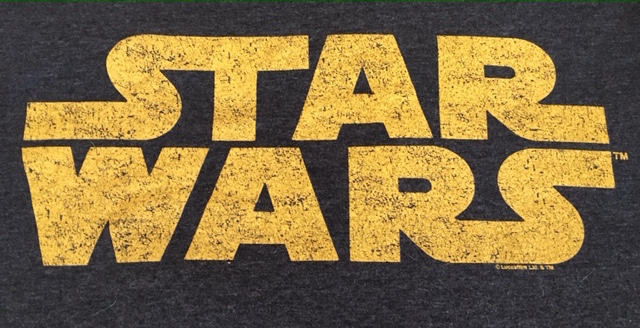By Joshua A. Johnston
When Star Wars first hit theaters in 1977, audiences were captivated by the exotic species of George Lucas’s galaxy far, far away. To the more casual filmgoer, the differences between the aliens of Star Wars and Gene Roddenberry’s then-decade-old Star Trek might have seemed little more than a difference in makeup budgets.
The differences, though, went well beyond that. While Gene Roddenberry had political and cultural ideas in mind with his extraterrestrials, George Lucas had more entrepreneurial motives. Star Wars was about creatures that appealed to a broad age group … and, by the time of Return of the Jedi, creatures that made for good merchandising. Sometimes this was a smashing success, like the lightsaber-wielding Yodas that followed the release of Attack of the Clones. Other times, it backfired spectacularly, such as with Jar-Jar Binks and the Gungans.
Easily lost in the Jar-Jar rage was this basic fact: cute comic-relief aliens were nothing new for Lucas. The director had been seeking out funny aliens with mass-market appeal as far back as the Jawas of Tatooine in A New Hope. But Lucas also wanted these kid-friendly aliens to have some action chops. In short, the quintessential Star Wars character was someone or something that was both loveable and heroic. R2-D2. Wicket the Ewok. Nien Nunb the Sullustan.*
Here, we’ll take a brief look at Lucas’s most iconic creations, both of which are not only famous, but are great examples of Lucas’s extraterrestrial vision.
The Wookiees
Wookiees are one of the more beloved — and most mysterious — creatures of early Star Wars lore. Wookiees are a cross between a large dog, an auto mechanic, and Bigfoot. Chewbacca, the lone Wookiee of the original trilogy, clings to Han Solo like a faithful companion, but he can also repair a hyperdrive or club a stormtrooper to death if the situation requires.
Lucas considered at least two planets as possible Wookiee homeworlds during the original trilogy. One was reportedly Yavin IV, the Rebel base the Death Star threatens in A New Hope. The other was Endor, the jungle world of Return of the Jedi that instead went to the Ewoks. Lucas later explained that, in the case of Endor, he wanted the Empire to exploit — and later be defeated by — a tech-free world, and Chewbacca had already established that Wookiees knew their way around a hydrospanner.
The Wookiee homeworld did finally make its film debut in the last of the prequels, Revenge of the Sith. Known as Kashyyyk, it bears more than a passing resemblance to Endor: expansive green jungles, treehomes, and a fair amount of fighting. Just as the Ewoks had swung from treehomes in Episode VI, so did the Wookiees descend to the attack in Episode III. (Unlike Endor, which is central to Return of the Jedi’s plot, Kashyyyk is mostly a side note in Revenge of the Sith.)
On Kashyyyk, both sides of the classic Lucas-style protagonist alien are on display. In one scene, Wookiees come crashing down on droid transports. In another, a young(er) Chewbacca gives Yoda a piggyback ride following Order 66, taking the Jedi Master to safety.
The Ewoks
The Ewoks were not Lucas’s first step toward the kid-appeal Dark Side, although they were one of his biggest. The knee-high natives of Endor are a centerpiece of Return of the Jedi’s third act, whether it be hijacking speeders, throwing rocks at stormtroopers, or gasping at Force-levitated C-3POs. The Ewoks are initially suspicious of the humans of the Rebel Alliance but later become their faithful allies against the Empire. Cute, cuddly, and mildly ferocious, as individuals they are at best a cute pillow, at most an annoyance. In large groups they can be more formidable, although they seem to come off as a bid of an underdog in Jedi, especially when facing the Empier’s AT-ST walkers. When it comes to the Lucas duality of lovable and heroic, Ewoks lean farther toward the former than Wookies.
George Lucas continued to ride the popularity of the Ewoks in the years following Return of the Jedi. In the mid-1980s, Lucas greenlighted a pair of made-for-TV Ewok movies: The Ewok Adventure (later rebranded as Caravan of Courage: An Ewok Adventure) and Ewoks: The Battle for Endor. The tagline for The Ewok Adventure is says it all: “You’ll live the adventure … You’ll love its heroes.” These TV productions are set shortly before Episode VI and have a decidedly more fantasy bent, replacing the Force with magic: mystical trinkets, witches, and the like. A major Ewok from the films, Wicket, gets expanded treatment in the TV movies, becoming for Ewoks what Chewbacca is for Wookies.
Just as in the theatrical films, the Ewoks are initially suspicious of the humans, but in time become faithful companions. In fact, the Ewok movies take the relationship between humans a step farther. Whereas in Jedi the Ewoks are more along the lines of cuddly compatriots, in the TV movies the Ewoks become something closer to full-fledged protectors. In both TV films, human children become, for various reasons, separated from adults and its up to the Ewoks to help them. With familar themes of good intentions, outsized heroics, and comical mishaps, of course.
* Nien Nunb was the guy who rode shotgun with Lando Calrissian in the Millenium Falcon at the end of Return of the Jedi.
 Joshua A. Johnston grew up reading the grand masters of science fiction and still devotes more time to their endless galaxies than he really should. You can find him online at www.joshuaajohnston.com. – See more at: www.joshuaajohnston.com
Joshua A. Johnston grew up reading the grand masters of science fiction and still devotes more time to their endless galaxies than he really should. You can find him online at www.joshuaajohnston.com. – See more at: www.joshuaajohnston.com


